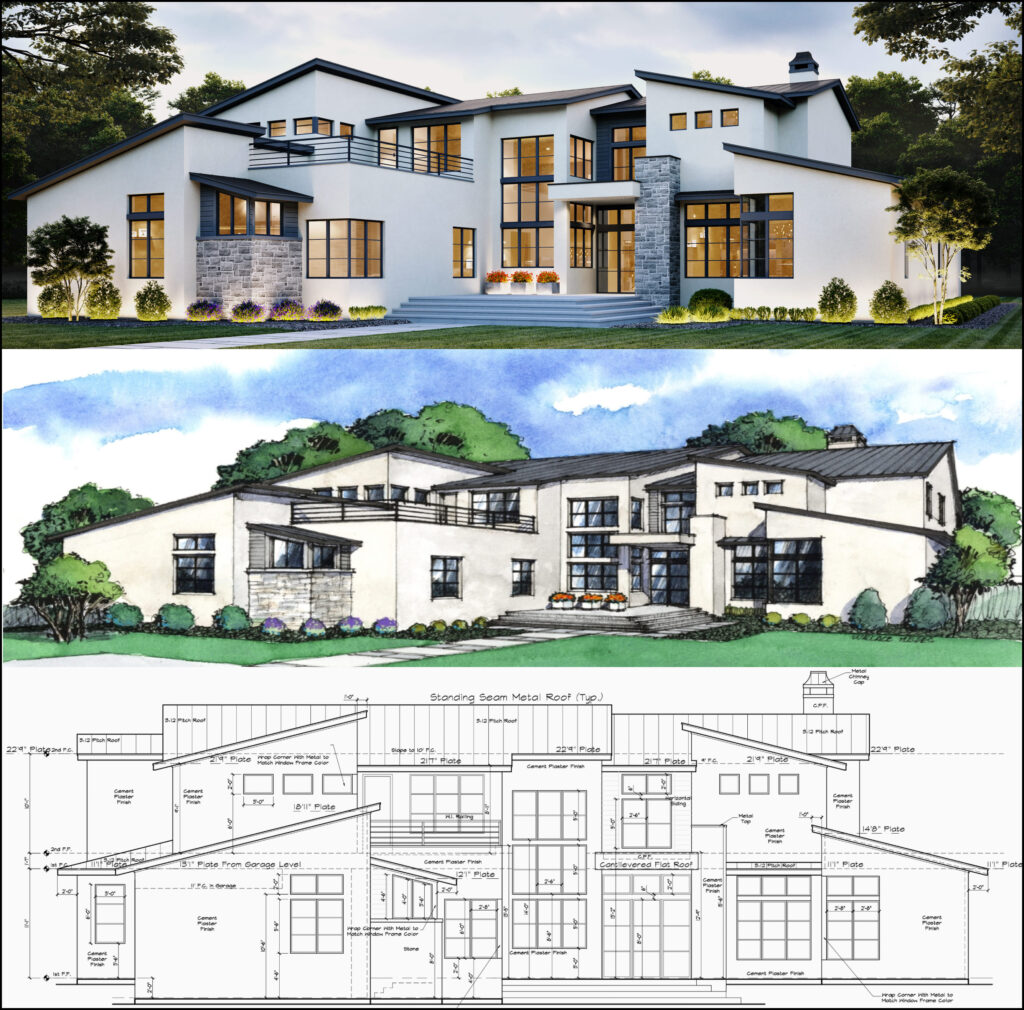The Necessary Duty of an Architect in Forming Lasting Urban Settings for Future Generations
The role of an engineer in crafting sustainable city settings is progressively pivotal in reacting to the difficulties of climate change and urbanization. By perfectly incorporating ecological concepts into their styles, engineers not just enhance the visual and functional high quality of urban rooms yet also address pressing issues such as power effectiveness and social equity. Their knowledge in ingenious materials and neighborhood involvement forms growths that reverberate with neighborhood worths and aspirations. Nevertheless, as we check out the complexities of this field even more, it comes to be noticeable that the future of city living might hinge on the actual methods designers utilize today.
Comprehending Sustainable Urban Style
Sustainable city style incorporates environmental principles with city planning to create settings that are not only livable but additionally durable. This approach highlights the importance of including natural systems into the city material, guaranteeing that development fulfills the requirements of the present without compromising the capacity of future generations to fulfill their very own requirements. Trick aspects of lasting urban style consist of effective land usage, the promo of biodiversity, and the combination of environment-friendly areas, every one of which add to improved lifestyle for residents.
Furthermore, lasting urban style focuses on the reduction of the metropolitan warmth island impact, boosted air top quality, and effective stormwater monitoring. It urges the usage of renewable resources and energy-efficient structure techniques, which substantially reduced carbon impacts. Additionally, lasting city layout fosters social equity by producing obtainable public rooms and promoting mixed-use developments that satisfy diverse populaces.
Via thoughtful preparation and cutting-edge layout strategies, sustainable urban atmospheres can improve neighborhood durability against climate modification while promoting economic development. This holistic method not only addresses immediate urban challenges but also prepares for much healthier, extra lasting cities for generations ahead.
Secret Duties of Designers
Designers play a critical role in shaping lasting city atmospheres by equating design concepts right into concrete structures and spaces. Their duties incorporate a large variety of activities that contribute to the total success of metropolitan design projects.
Firstly, designers carry out extensive site analyses to recognize the ecological, social, and social context of their projects. This foundational knowledge educates their layout decisions, guaranteeing that structures balance with their surroundings. They additionally take part in collaborative procedures with stakeholders, including city organizers, engineers, and the area, promoting an inclusive technique to urban growth.
Additionally, engineers are charged with developing designs that maximize energy performance, resource preservation, and functionality. They need to abide by neighborhood zoning laws, developing codes, and sustainability certifications, making certain compliance while pressing the boundaries of advancement.
Furthermore, architects are in charge of handling the layout procedure, coordinating with different specialists throughout the construction stage to make certain that the vision is realized properly (cda architects). Eventually, their duty is not only about aesthetics; it is about creating resistant, adaptive spaces that boost the lifestyle for existing and future generations, preparing for lasting metropolitan living
Cutting-edge Materials and Techniques

Furthermore, advancements in modern technology have caused the advancement of high-performance products, such as shielded concrete forms (ICFs) and photovoltaic glass, which contribute to energy conservation and harness eco-friendly power. Techniques such as easy solar design and environment-friendly roofings additionally exemplify how design can balance with natural systems, minimizing reliance on synthetic home heating and cooling.
In addition, the combination of wise products, which adjust to ecological changes, uses appealing avenues for enhancing building performance. important link These products can react to temperature level variations or moisture levels, optimizing convenience and sustainability.
Inevitably, the critical option and application of ingenious products and methods empower designers to develop city spaces that are not just practical and visually pleasing yet additionally resilient and eco liable, guaranteeing a lasting future for generations to find. cda architects.
Area Engagement and Partnership
The success of innovative products and methods in sustainable urban design is significantly improved by energetic community involvement and partnership. Engineers should acknowledge that the built environment exceptionally affects the lives of regional residents, making it imperative to involve them in the layout procedure. Engaging the area promotes a feeling of ownership and accountability, guaranteeing that growths not only meet visual and useful requirements yet additionally show the worths and desires of those who populate them.

Effective neighborhood involvement likewise aids in focusing on social equity within urban growth. By considering the voices of marginalized populaces, architects can produce rooms that are comprehensive and fair. In this way, neighborhood engagement and partnership end up being indispensable to accomplishing absolutely sustainable urban settings that serve the requirements of present and future generations.
Future Patterns in Sustainable Design
An emerging focus on adaptive reuse and round economic situation principles is readied to redefine the landscape of sustainable architecture. As cities grapple with enhancing populace thickness and environmental difficulties, designers are increasingly transforming to methods that optimize existing frameworks as opposed to going after brand-new builds. This strategy not only maintains cultural heritage yet additionally dramatically reduces resource consumption and waste.
Furthermore, advancements in modern technology are forming future patterns in lasting design. The integration of wise materials and building systems permits real-time power management, improving performance and decreasing carbon impacts. Innovations such as environment-friendly roofings, living walls, and energy-generating exteriors are becoming conventional methods, additionally advertising environmental balance within city atmospheres.
Moreover, a change towards biophilic design is gaining traction, stressing the connection in between nature and human health. By incorporating natural environments, engineers develop rooms that cultivate psychological health while promoting biodiversity.
Conclusion
To conclude, engineers are pivotal in progressing lasting city environments through their proficiency in design, ingenious products, and neighborhood interaction. By focusing on power effectiveness and resource conservation, these specialists contribute to the creation of durable city rooms that fulfill the requirements of present and future generations. The assimilation of eco-friendly concepts not only boosts livability but also cultivates social equity, making certain developments resonate with the values and desires of the communities they offer.